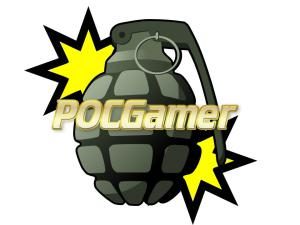Welcome to the second installment of World Building in 500-ish words! This post will be looking at genre selection. A lot of people when designing their game worlds simply think “Oh yeah, it’s a fantasy world.” and promptly leave it at that. In reality, the genre, or collection of genres, of fantasy that you choose is going to have a great effect on you game world’s feel, magic, monsters, peoples, and tone. Now, many reading this will have had the experience of a sudden tonal shift in a game, that immersion breaking moment when it snaps to something completely outside the realm of its usual feel. By carefully selecting and building your genre, you can avoid that, and craft a better experience for yourself and others.
“Fantasy” is an insanely broad genre, encompassing dozens of subgenres, and with crossovers with a number of other genres like horror (Vampire: Dark Ages), romance (Blue Rose), and even science fiction (Shadowrun). So picking your subgenres and crossovers (if any) at the point of creation is key. Broadly, most fantasy RPG worlds fall into three categories:
- Low Fantasy: these are gritty worlds with gritty themes. These worlds tend to be very close to the real world in flavour, with little magic, few monsters (and those that exist are truly terrifying), and non-human races are bordering on legendary. These are also often the realm of historical mythology inspired adventures and worlds. Think Beowulf, Usagi Yojimbo, or Game of Thrones.
- “Standard” Fantasy: in many ways, this has become the default for what people think about “fantasy gaming”. Monsters are common(ish), magic is known but not necessarily common, and seeing non-human races isn’t an unusual experience. Think Record of Lodoss Wars, Rat Queens, or Dragon Age.
- High Fantasy: this is buckle up and get your cowboy hat territory. Worlds in this genre are about as far from “real world” as you can get. Floating castles, magitech mecha, and airships are just another day on these worlds. Monsters are everywhere, your neighbours proably aren’t human, and magic is ubiquitous (replacing technological development even!). Think Final Fantasy, Overlord, or World of Warcraft.
Now, crossing over with these are what I call (in this case), the “flavour genres” for fantasy. These are things like horror, exploration, dark, grim dark, romance, science fiction, mystery, drama, and so on. These are going to act later as your plot development bases, and help guide the players when they’re making their characters and coming up with their backgrounds. By selecting one or more, you also refine your own idea, taking it from its raw state to something more workable.
It’s a key thing at this point, especially if you’re developing a world for play, to communicate the kind of world it is to the people who will be playing in it. This also ties in with the next post, which will be looking at tone as a feature of world development. I’ve already mentioned it a few times here, but it deserves its own complete examination. So stay tuned for the next installment of world building in 500ish words!
 Graeme is a long-time gamer who has been writing critically about gaming since 2013 at his blog, POCGamer. He and his family live in the North Okanagan area of British Columbia. When not at work, writing, or gaming, Graeme can be found reading, scuba diving, or watching too much YouTube. In addition to his regular life, Graeme is a veteran of three overseas tours as a reservist with the Canadian Armed Forces. Follow him on Twitter, Facebook, Youtube, and see his original and ongoing posts at bis blog, POCGamer. Contact him here.
Graeme is a long-time gamer who has been writing critically about gaming since 2013 at his blog, POCGamer. He and his family live in the North Okanagan area of British Columbia. When not at work, writing, or gaming, Graeme can be found reading, scuba diving, or watching too much YouTube. In addition to his regular life, Graeme is a veteran of three overseas tours as a reservist with the Canadian Armed Forces. Follow him on Twitter, Facebook, Youtube, and see his original and ongoing posts at bis blog, POCGamer. Contact him here.

